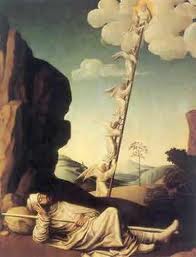 Now available in the Sleep and Dream Database are hundreds of new dream reports gathered as part of a demographic survey of 2252 American adults, conducted via online questionnaires administered by Harris Interactive. I designed the survey to focus on three types of dreams that people often report with special frequency and/or intensity: Work dreams, lucid dreams, and visitation dreams. I’ve just begun reading through the narratives, and they’re fascinating–I invite anyone who’s curious to take a look at the dreams for yourself, and let me know what patterns you see. (Update: I’m having some server issues, if you can’t access the site I’m sorry, please try again later and I should have it fixed.)
Now available in the Sleep and Dream Database are hundreds of new dream reports gathered as part of a demographic survey of 2252 American adults, conducted via online questionnaires administered by Harris Interactive. I designed the survey to focus on three types of dreams that people often report with special frequency and/or intensity: Work dreams, lucid dreams, and visitation dreams. I’ve just begun reading through the narratives, and they’re fascinating–I invite anyone who’s curious to take a look at the dreams for yourself, and let me know what patterns you see. (Update: I’m having some server issues, if you can’t access the site I’m sorry, please try again later and I should have it fixed.)
The work dreams are answers to the question, “Have you ever dreamed about your job or a situation at work?” I’ve created a sample word search for the female work dreams and male work dreams, including all reports of five or more words. For the most part these do not seem to be happy dreams.
The lucid dreams are answers to the question, “Have you ever dreamed that you were aware of being within a dream?” I’ve created a sample word search for the female lucid dreams and male lucid dreams, including all reports of five or more words. At a minimum, these dreams testify to the frequency of lucid dreaming experiences among the general American public.
The visitation dreams are answers to the question, “Have you ever dreamed about someone who is dead appearing as if they were still alive?” I’ve created a sample word search for the female visitation dreams and male visitation dreams, including all reports of five or more words. These kinds of dreams have played a big role in cross-cultural religious history, and I’m interested to study their occurrence among present-day Americans.
The survey also included questions about dream recall, nights of insomnia per week, and several other questions about demographic background (age, race, education, income, political ideology, religious worship, etc.). These data, too, are available for you to study however you wish (although you may find it a little tricky–I’m still working on bugs in the SDDb system). I’ll write soon about my initial findings with these demographic variables as they relate to patterns of sleep and dreaming.

